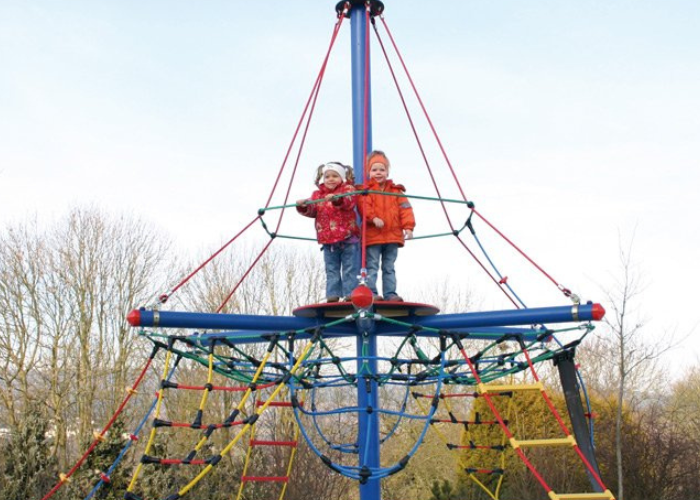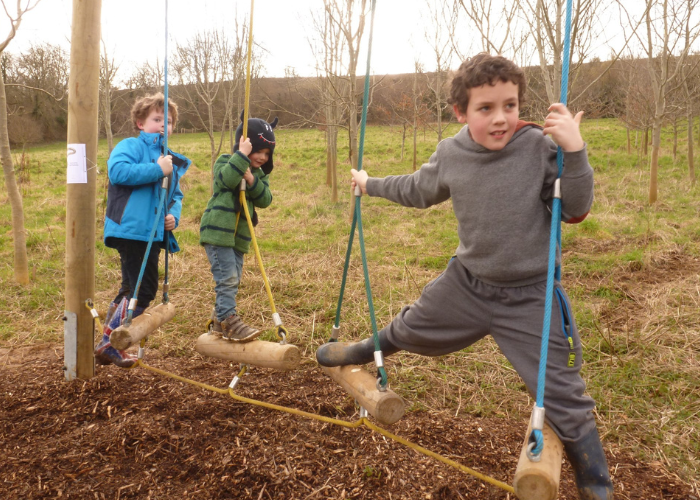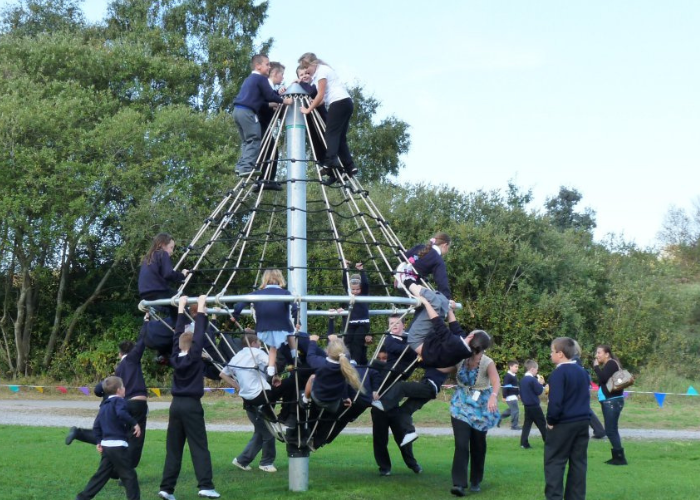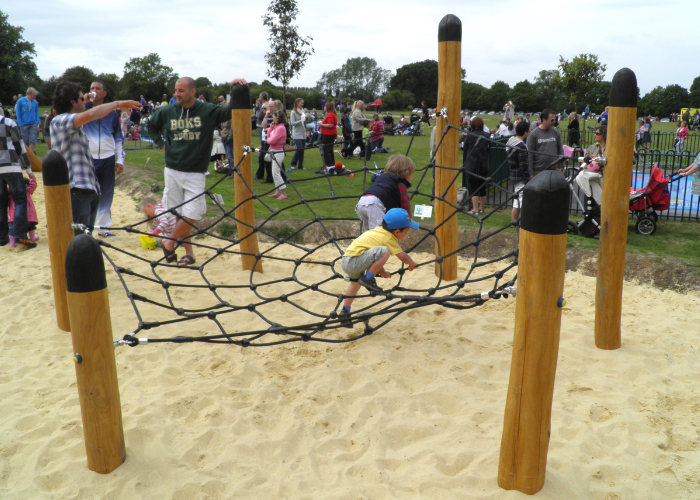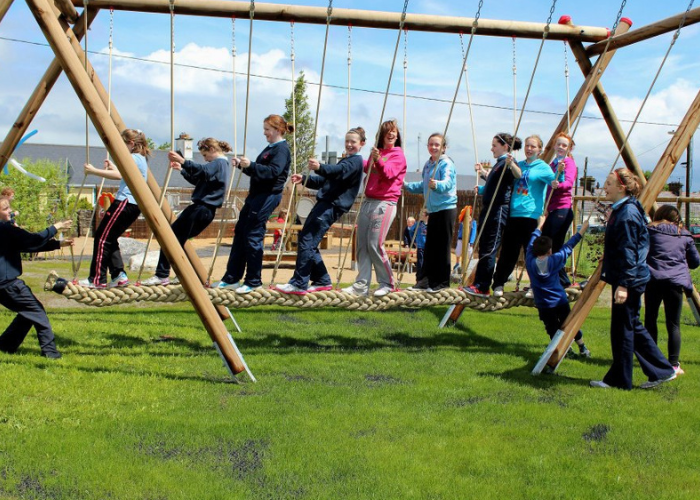Create an Inclusive Playground With Huck Play
Designing an inclusive playground is incredibly important for creating a safe and enjoyable play experience for all children.
Providing a space where children of all abilities can play together promotes inclusion, fosters empathy and understanding, and creates a sense of community.
Spaces like schools, public parks, and community centres can greatly benefit from incorporating inclusive playground designs – and we’re committed to helping make that happen.
To help you design your new or updated, inclusive playground, we've broken down what constitutes inclusivity in playgrounds and how you can create a DDA and EA-compliant play area with Huck Play.
What is an Inclusive Playground?
An inclusive playground is built for children of all abilities, making sure every child can play, learn, and interact together.
These playgrounds have accessible equipment, sensory-rich experiences, and layouts that support physical, social, and cognitive development.
By eliminating barriers, inclusive playgrounds allow children with disabilities to play with their peers, fostering empathy, understanding, and community.
Huck Play is committed to creating spaces that welcome all children and their families. Contact us today to find out how we can create an inclusive playground for your school or community.
How to Create an Inclusive Playground Design
Designing a playground with inclusive play equipment requires careful consideration of various elements to ensure all children have the opportunity to play safely and enjoyably. Here's what needs to be included:
1. Equipment Variety:
| Midi DDA Swing Seat | "Rolli" Trampoline with Wheelchair Access | Swing Bed |
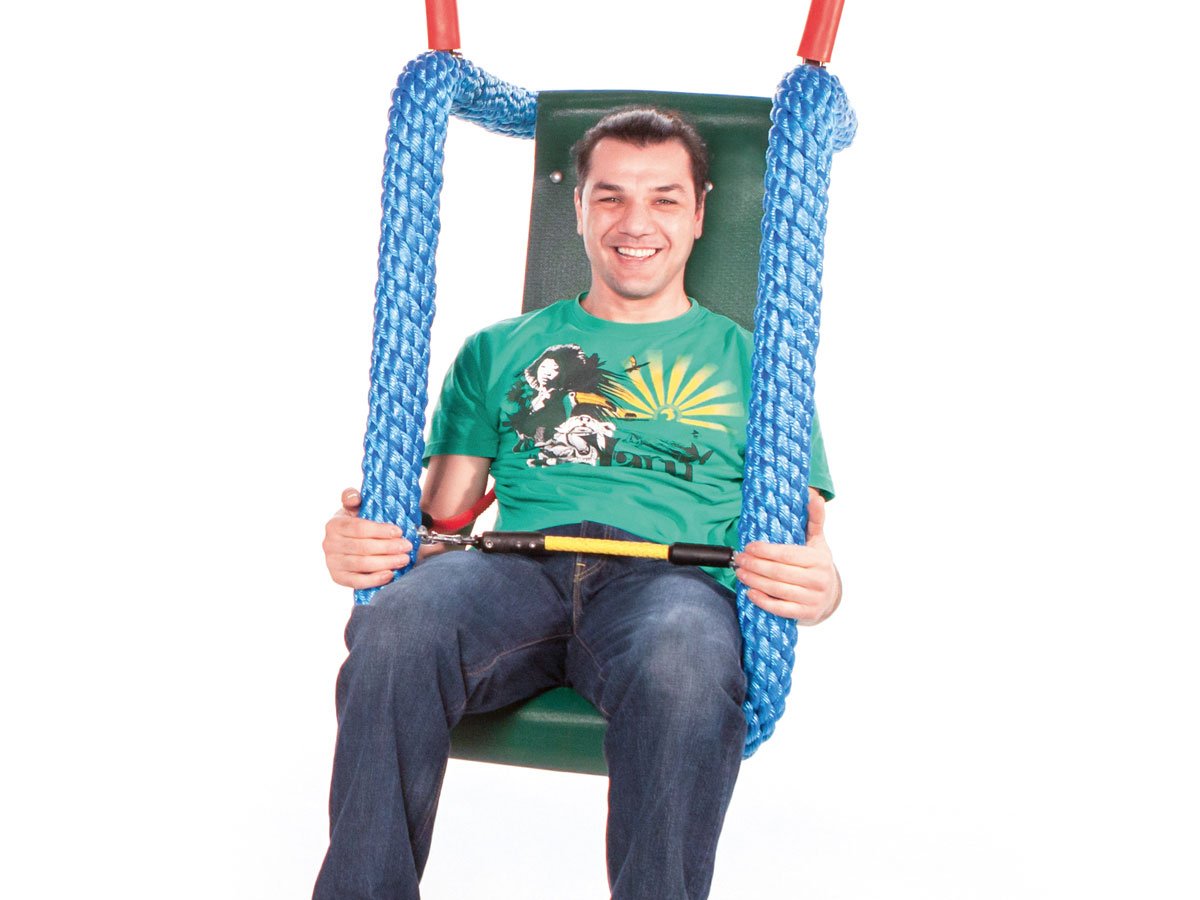 |
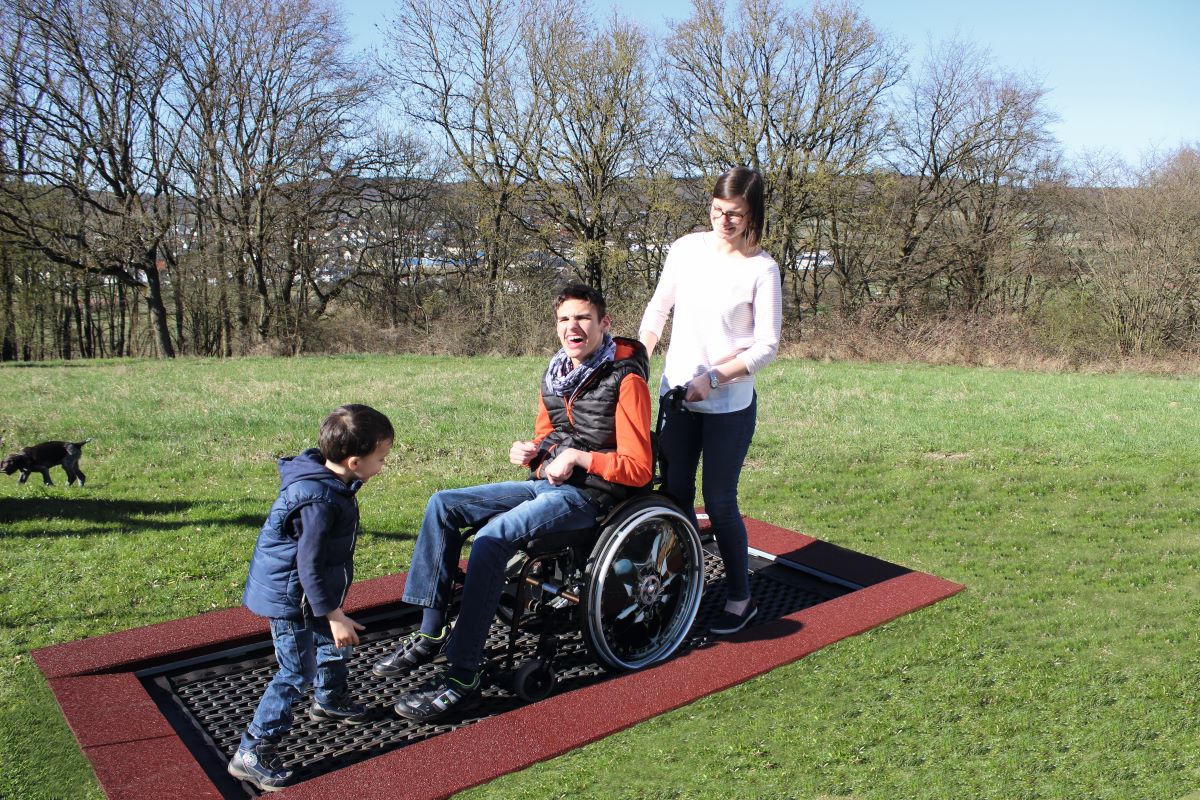 |
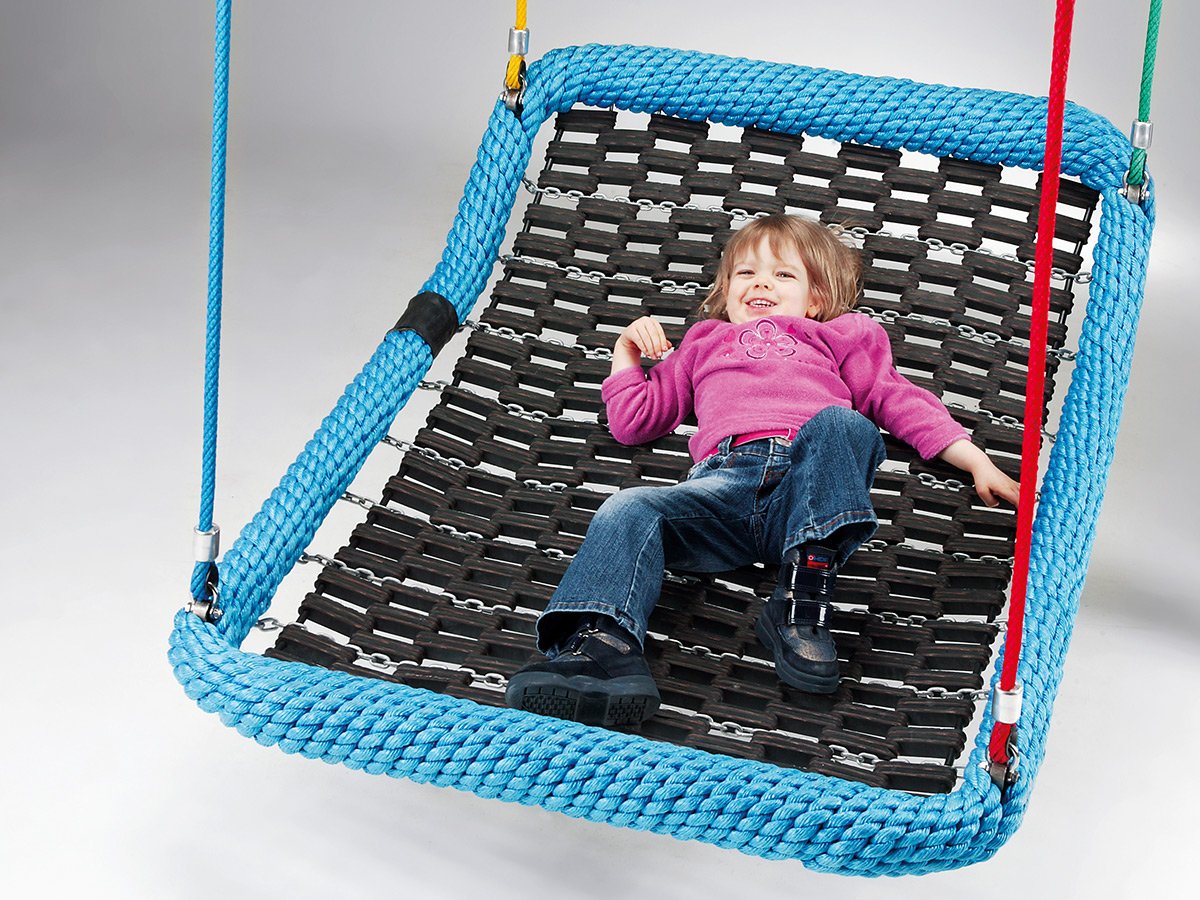 |
- Accessible Swings and Slides: Include swing sets and slides with adaptive seating and transfer platforms for wheelchair users.
- Sensory Play Equipment: Incorporate tactile panels, musical instruments, and interactive play elements that engage senses beyond sight and hearing.
- Multi-Level Play Structures: Design play structures that offer accessible routes, such as ramps and transfer stations, to different heights and features.
Including DDA-compliant play equipment, such as swings, is crucial to ensure every child, regardless of their physical or cognitive abilities, can participate and enjoy playtime.
This type of equipment promotes inclusivity by allowing children to engage at their comfort levels and encouraging interaction among peers. It supports the development of diverse skills like balance and coordination while boosting self-confidence and a sense of belonging.
Ultimately, a playground with varied and accessible equipment, including DDA-compliant options, creates a welcoming environment for all children and their families.
2. Thoughtful Layout:
- Barrier-Free Pathways: Ensure all areas are accessible via smooth, wide paths suitable for mobility aids.
- Inclusive Zones: Create distinct play areas catering to different age groups and abilities, fostering varied play experiences.
- Visibility and Supervision: Design the layout to allow caregivers easy supervision across the playground, prioritising playground safety and comfort.
A well-planned layout is key to making sure all children can use playground equipment, no matter their abilities.
This involves creating smooth, wide paths that link different play areas, making it easy for wheelchairs and mobility aids to move around. Designing inclusive layouts with separate areas for different age groups and abilities enhances the play experience and ensures safety.
By focusing on these accessibility features, an inclusive playground helps all children feel they belong and encourages them to play together.
Discover Our Wheelchair-Access Trampolines
3. Appropriate Materials:
- Safety Surfacing: Use impact-absorbing materials like rubber mats or poured-in-place surfaces to cushion falls and support mobility devices.
- Non-Toxic and Durable: Select materials that are safe, robust, and weather-resistant, ensuring longevity and minimal maintenance.
- Natural Elements: Integrate nature through landscaping, offering shaded areas and greenery that enhance comfort and aesthetic appeal.
Selecting the right ground cover materials is key to making a playground accessible and inclusive.
Safety surfaces like rubber mats or poured-in-place options cushion falls and help those using mobility devices move around easily. These durable, non-toxic materials are crucial for creating a safe and welcoming space.
By providing stable and consistent ground, children of all abilities can easily explore the playground, ensuring everyone can join in the fun and contribute to an inclusive community.
4. Additional Features:
- Seating and Gathering Spaces: Provide ample seating for children and caregivers, facilitating social interaction and rest.
- Signage and Instructions: Use clear, multilingual, and symbol-based signs to ensure information is accessible to all.
- Community Involvement: Engage local communities in the design process to ensure the playground meets its users' specific needs and desires.
Adding features outside the playground boosts comfort and accessibility for all. Accessible parking, restrooms, and shaded seating areas make the environment more inviting.
Picnic tables and benches provide spots for relaxation and social interaction, fostering community. Pathways and signage help guide visitors, improving navigation for those with different abilities.
These elements create a welcoming atmosphere, encouraging families of all abilities to enjoy the playground together.
By incorporating these elements, designers can create inclusive playgrounds that comply with accessibility standards and enrich the play experience for every child.
How to Make Sure Your Playground Equipment is Inclusive
To create truly accessible playground equipment, it's crucial to adhere to established guidelines and regulations while considering the diverse needs of all users.
The UK follows the Disability Discrimination Act (DDA), which ensures public spaces, including playgrounds, are accessible to everyone. Here's how you can make sure your playground equipment is inclusive:
- Compliance with Standards – Ensure all playground designs and equipment meet the DDA requirements. Compliance helps eliminate barriers, allowing children with disabilities to have equal access to play opportunities. Consulting the relevant codes and guidelines during the planning stage ensures all elements meet these standards.
- Adaptive and Usable Equipment – Choose equipment that offers adaptive features, such as swings with secure harnesses, slide transfers for wheelchair users, and climbable structures with varying difficulty levels. By catering to a wide range of abilities, inclusive equipment encourages all children to participate in play.
- Regular Maintenance and Inspection – Conduct routine maintenance checks to keep inclusive equipment in safe working condition. Regular inspections ensure that equipment remains accessible and safe for use, addressing wear and tear or potential hazards promptly to prevent accessibility issues.
- Training and Awareness – Provide training for staff and community members regarding the use and maintenance of inclusive equipment. Creating awareness about the importance of inclusivity helps build a supportive environment where every child feels valued and included.
Focusing on these elements ensures that the playground equipment is welcoming to all children, fostering a sense of community and promoting equal opportunities for fun and learning.
Why Inclusive Play is Important for All Children
Inclusive play is crucial as it promotes equality and the enrichment of all children's developmental experiences, regardless of their abilities.
For children with limited abilities, inclusive play environments provide opportunities to enhance physical, social, and cognitive skills in a safe, supportive setting.
These spaces offer custom playground equipment and play experiences that address unique needs, helping build confidence and independence.
For children without limited abilities, inclusive play fosters empathy and understanding. It encourages children to interact with peers who may be ‘different’ from them, breaking down social barriers and promoting acceptance.
By sharing play experiences, all children learn the importance of diversity and develop essential life skills such as:
- Cooperation
- Communication
- Compassion
Ultimately, inclusive play cultivates a sense of belonging, ensuring every child feels valued and included.
Let Huck Play Design & Install Your Inclusive Playground
At Huck Play, we understand the importance of creating a truly inclusive environment for all children to enjoy. Our end-to-end service ensures that every aspect of your playground's design and installation is tailored to meet the needs of diverse abilities.
From the initial consultation to the final installation, our team works closely with you to bring your vision of an inclusive playground to life. We offer bespoke solutions, incorporating accessible and sensory-friendly equipment that not only meets industry standards but also enriches play experiences for every child.
Our dedicated team oversees each step, guaranteeing a seamless process that results in a safe, engaging, and inclusive playground.
Contact us today to discuss your needs and how we can help transform your school or community.
FAQs
What Ages Are Your DDA Swings Suitable For?
Our DDA swings are suitable for children of varying ages, typically ranging from toddlers to young adolescents. Designed with adaptability and safety in mind, these swings cater to different abilities, ensuring an inclusive and enjoyable play experience for all.
Is Your Inclusive Playground Equipment Suitable for All Kids?
Yes, our inclusive playground equipment caters to children of all abilities, fostering a safe and accessible environment. Designed to bridge gaps, our equipment ensures every child can participate actively, promoting equality and enriching their play experience.
What Does the EYFS Say About Inclusive Play?
The Early Years Foundation Stage (EYFS) emphasises inclusive play as vital for development, advocating for environments where every child, regardless of ability, is supported and encouraged to participate, fostering diverse social interactions, empathy, and cognitive and physical growth.
Do Your Inclusive Playgrounds Meet Playground Regulations?
Yes, all our inclusive playgrounds adhere to UK playground regulations, ensuring they meet safety and accessibility standards. Our designs are inspected and approved, guaranteeing that every child can enjoy a safe, inclusive, and compliant play environment.


